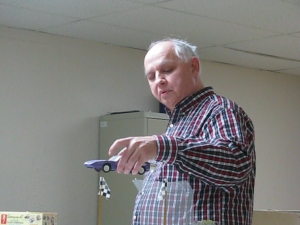















Dodge Charger Daytona |
|---|
|
| Topic Navigation |
|---|
|
Wikipedia: Dodge Charger Daytona
Page Sections History Video Photographs Merchandise |
History
The following section is an excerpt from Wikipedia's Dodge Charger Daytona page on 24 September 2018, text available via the Creative Commons Attribution-ShareAlike 3.0 Unported License.
Dodge, an American automobile brand, produced three separate vehicles with the name Dodge Charger Daytona, all of which were modified Dodge Chargers. The name is taken from Daytona Beach, Florida, which was an early center for auto racing and still hosts the Daytona 500, one of NASCAR's premier events. The first use of the Daytona name on a car was on a version of the Studebaker Lark. The Daytona was the performance model of the compact Lark and it was produced from 1963–1966. The Dodge Charger was made to beat the competition in NASCAR, Americas Premier Racing Series.
With the racing failure of the previous limited edition 1969 Dodge Charger 500 in NASCAR and Plymouth's superstar Richard Petty leaving them for Ford, the 1969 Dodge Charger Daytona was created. It was intended to be a high-performance, limited-edition version of the Dodge Charger produced in the summer of 1969 for the sole purpose of winning high-profile NASCAR races. It won its first race, the inaugural Talladega 500, in the fall, although the top names had left the track on Saturday in a boycott of the race. Buddy Baker, in the No. 88 Chrysler Engineering Dodge Charger Daytona, was the first driver in NASCAR history to break the 200 mph (322 km/h) mark, on March 24, 1970, at Talladega. The 1969 Dodge Daytona won two races in 1969 and another four in 1970 for a total of six. Its successor, the 1970 Plymouth Superbird, won eight races - all in 1970. Dodge Daytonas also won on the USAC and ARCA race circuits. They set numerous race and pole records.
One of the four famous aero-cars, the Dodge Daytona had featured special body modifications that included a 23-inch-tall (584 mm) stabilizer wing on the rear deck, a special sheet-metal "nose cone" that replaced the traditional upright front grille, a flush rear backlight (rear window area), a 'window cap' to cover the original Charger's recessed rear window, specific front fenders and hood that were modeled after the upcoming 1970 Charger, stainless steel A-pillar covers and fender mounted cooling scoops. The Daytona was built on the 1969 Charger's R/T trim specifications, meaning that it carried a heavy-duty suspension and brake setup and was equipped with a 440 cu in (7.2 L) Magnum engine as standard. Of special note to collectors is the optional 426 cu in (7.0 L) Hemi V8 engine, which only 70 of the 503 Daytonas carried. It had a corporate cousin in the "one year-only" 1970 Plymouth Superbird and with help of Chrysler's missile engineers, the Charger Daytona was born.
The "Winged Warriors", as they were affectionately known, did not compete for long in NASCAR's top Cup series. On the next season of NASCAR, the executives ban aero specs on cars with engines bigger than 300 Cubic meter. Because of their exceptional speed and performance, NASCAR subsequently changed the rule book, effectively banning all four of the Aero Cars from Dodge, Ford, Mercury, and Plymouth from competition by the end of 1970. See also Plymouth Superbird, Ford Torino Talladega and Mercury Cyclone Spoiler II for additional information about the aero cars.
The Dodge Daytona is now a very valuable collectible, with 440-powered Daytonas reaching into six-figure territory and 426 hemi-engined cars passing the $900,000.00 mark. The "Super Charger IV EL", which looked like a roadster prototype spin-off of the Charger Daytona minus the roof and spoiler, is seen as a pimp-mobile in the 1974 film Truck Turner. The car was actually a Charger show car, with a front end of a Daytona mounted onto it. Foot note: These 503 cars were actually charger 500's as they rolled of the assembly line. Dodge shipped them to an offsite fabricator (not employees of dodge), who transformed these by mounting the wing, supports in trunk and the front nose cone. The myth of these being made on assembly line is inaccurate.
 |
John Walczak on converting a model Charger into a Charger Daytona Video ©2008 Bill Crittenden From the February 2008 Meeting of C.A.R.S. in Miniature Play Video of John Walczak on converting a model Charger into a Charger Daytona - 54.6MB |
| Type & Item # | Name | Details |
|---|---|---|
| Die Cast - Johnny Lightning | Bobby Isaac #71 | Stock Car Legends, small scale, orange w/white #71 K&K Insurance Dodge Charger Daytona |
